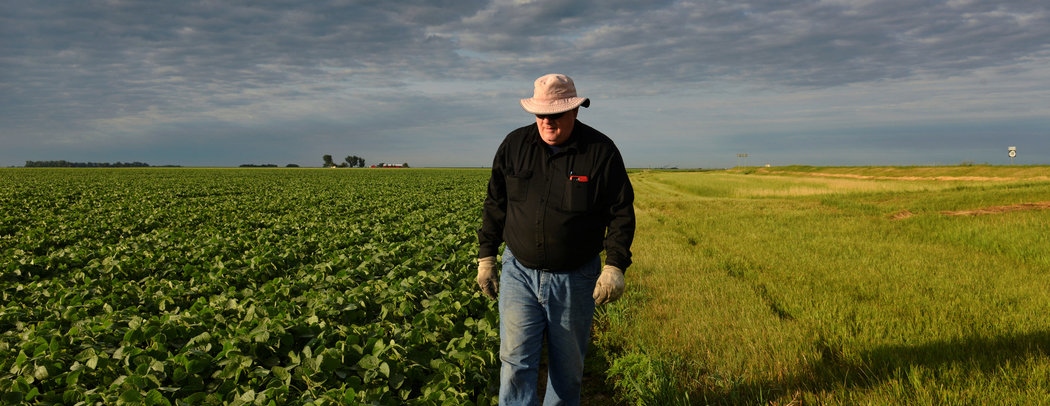Trump’s $12 Billion Aid to US Farmers
July 25, 2018 | Expert Insights

The Trump administration has said it will pay $12 billion to help US farmers through the Commodity Credit Corporation Charter Act, a Great Depression-era programme, as the escalating trade war cripples the US agricultural sector.
The specifics of the aid plan will be subject to a federal rule making process.
Background
China is a major market for US agricultural products, machinery, and cars as well as other products. In 2016, it was the third largest market for US exports. According to the American Apparel & Footwear Association, more than 41% of clothing and 72% of footwear sold in the US are made in China.
The United States and China are two of the largest economies in the world. Each considers the other as a partner in trade and an adversary in geopolitics. US President Donald Trump has previously been a critic of China, blaming them for loss of jobs within the US. He has often criticized the US trade deficit with China. China's trade surplus with the United States widened in 2017 while total foreign trade volume maintained rapid growth.
In recent months, experts have begun sounding the alarm about an impending trade war between US and China, the two largest economies in the world. These fears solidified in March, when Trump announced global import tariffs of 25% on steel and 10% on aluminium. The President cited “national security” in order to circumvent WTO commitments. Since then, tensions have escalated. The US has imposed tariffs worth over $150 billion; Beijing responded with $50 billion worth of tariffs.
China has cancelled nearly $140 million in soybean contracts at the end of June. Cherry producers also felt the pinch during their short cherry season, as they face an additional 25 per cent tariff in China. India and the EU have also raised tariffs on US farm outputs, including livestock products, fruits and nuts.
Analysis
Agriculture Secretary Sonny Perdue on Tuesday unveiled a three-part, $12 billion plan to ease the sting of retaliatory tariffs on US farmers through a mix of payments, purchases and trade promotion efforts. The plan focuses on mid-west soya bean producers and others targeted by retaliatory measures.
In the first part of the plan, the government will provide direct payments to growers and producers of soybeans, sorghum, corn, wheat, cotton, pork and dairy. The second part includes a “food purchase and distribution program.” The USDA’s Agricultural Marketing Service will purchase fruit, nuts, rice, beef, pork and dairy products for redistribution to federal nutrition assistance programs. Finally, resources will be directed towards finding new markets for US farmers to sell their products abroad.
“This is obviously a short-term solution that will give President Trump time to work on a long-term trade policy and deal to benefit agriculture as well as all sectors of the American economy,” Secretary Perdue said at a press conference.
When Franklin Roosevelt took office during the Great Depression, he instituted various programmes to provide employment and minimum wages to labourers, increasingly migrating from factories on the East Coast in search of jobs in the agricultural Mid-Atlantic belt. However, his programmes were criticised as government purchase of harvests led to farmers boosting annual crop output.
The plan seeks to ensure that US farmers and ranchers, a key constituency for Republicans, do not bear the brunt of an escalating trade fight as the administration attempts to rebalance America's trade relationships.
"The president's scorched earth trade war has put a lot at stake for Illinois and our rural economy. Soybean farmers in Illinois tell me that since the start of the president's trade war, they've seen their crop value drop by 20 per cent,” Senate Democratic Whip Dick Durbin said. ”Declaring a trade war on the world, instead of the truly bad actors, leaves a lot of collateral damage.”
The amount is in line with the roughly $11 billion in negative effects that USDA has calculated agricultural producers have suffered as a result of “illegal” retaliatory tariffs imposed by China, Canada, Mexico, the European Union and other major economies. Many countries, including India, China and the EU, have filed a complaint with the WTO against Trump’s tariff policies which violate provisions from the Doha Agreement.
Counterpoint
It is unclear whether the aid will cover many of the price losses that various agriculture sectors are experiencing. For instance, U.S. Meat Export Federation say that the tariffs from Mexico will lead to more than $835 million in annualized losses for the pork industry. The aid also doesn’t address other sectors of the economy that have been hurt by retaliatory tariffs, including technology, automobiles and chip-manufacturers.
Assessment
Our assessment is that the adversely affected US farmers will require the aid to cover for significant losses which could have an effect on their voting patterns in the upcoming elections. We believe that this might influence President Trump to restrict further escalation of $500 billion worth of tariffs with China. We feel that other sectors of the US economy may be affected by the unstable global market as the fall-out from the trade war is now hitting smaller players in the economy.








Comments